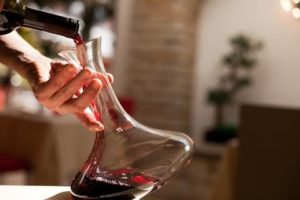
Red or White? Left or Right Bank? Answer: Bordeaux
Do you look forward to enjoying a glass of wine with lunch or dinner? Do you eagerly scan the wine list, and then start to sweat because you are unsure as to the appropriate wine to order?
What You Do Know
By now you know that you cannot judge a wine by its price. You also know that your friends and associates may, in fact, judge you by the wine you select. If it is good/better/best – you will be crowned a hero. If it tastes like Dr. Pepper (excessively sweet), or gasoline (the vines are adjacent to a major highway), you will lose any standing you thought you had as a “wine connoisseur.”
You could ask the waiter/sommelier to recommend a wine (forget your ego and ask for help) – but you are not sure you should trust this staffer since some employees get a commission on the wine they sell; perhaps they upsell a bottle of expensive wine so they get a sizeable “thank you” from the purchase.
You could have checked the wine list online and researched them before arriving at the restaurant (unfortunately, many restaurants do not update their online wine lists and you may be asking for a wine that is no longer in the wine cellar). You could also have called in advance and asked for recommendations…but you are just too busy to make the call.
Ask for Bordeaux
What to do? Ask for a bottle of Bordeaux!
Bordeaux is the most famous and desired wine blend in the world. Although both the reds and whites are excellent, Bordeaux is globally famous for its red wine blend of Cabernet Sauvignon and Merlot. Some winemakers may add Petit Verdot, Malbec and Cabernet Franc to the blend, but the most important grapes are the Cabernet and Merlot.
The Bordeaux district of France benefits from the Gironde estuary that winds through the center of the region creating two banks: left and right. Based on where the winery is located (on either bank), will determine the proportion of Merlot to Cabernet.
Left Bank? The Blend will have more Cabernet Sauvignon than Merlot. The wine in the glass will have tannins, alcohol and acidity. Powerful and rich, these wines age a little better than wines from the Right Bank and this is the side that made the region famous.
Right Bank? Merlot will dominate the blend and it will offer less tannin, lower alcohol and acidity than Left Bank. Merlot dominates and therefore can be enjoyed earlier and may be less expensive.
What Bordeaux Brings to the Glass
- Climate. Ideal for growing grapes
- Terroir. Ideal for growing grapes
- Location. Major port city for centuries, enabling winemakers’ access to information from various parts of the world. The wine merchants also capitalized on the ships and wealthy traders who visited the port daily, always sending them off on their travels with wine.
- Business acumen and good PR. As the travelers returned to their home countries with wine, they shared it with friends and family, and the reputation of the excellence of the wines spread to England and the Netherlands.
- Primary flavors of red Bordeaux: Black currant, Plum, Graphite, Cedar, Violets
- Price and quality. As a result of the global demand for Bordeaux, quality wines can be enjoyed at various price points. Smaller producers, with wines available for immediate enjoyment, have wines in the $15 – $25 price category (known as Petits chateaux). Plan to inventory wines for a private collection from top producers? Prices start at $30.
There are approximately 18,000 producers in Bordeaux and +/- 7000 specific chateaux (estates). The most famous producers in Bordeaux are Petrus, Margaux, Cheval Blanc and they represent 5 -8 percent of the entire production.
Cru Classifications
- Crus Artisans. Small artisan producers of the Medoc
- Crus Bourgeois. Producers in the Medoc based on quality assessment of regional character
- Crus Classes de Graves. Classification of producers in Graves from 1953 (amended 1959)
- Crus Classes de Saint-Emilion. Classification of top-quality producers in Saint Emilion (revisited very 10 years)
- Crus Classes de 1955. A 5-tier classification of producers in Medoc and Graves (and sweet wines from Sauternes and Barsac) from 1855 (one producer moved up a tier in 1973).
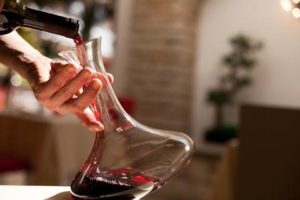
How to Serve
- Slightly below room temperature – 65 degrees F
- Decant red Bordeaux approximately 30 minutes before serving
- Store red Bordeaux below 65 degrees F
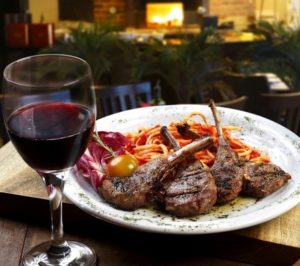
Pairings
- Meat: Steak, Roast Pork, Beef Brisket, Chicken Livers, Pot Roast, Venison, Dark Meat Turkey
- Cheese: Swiss, Comte, White Cheddar, Provolone, Pepper Jack
- Herbs/spices: Black/White Pepper, Oregano, Rosemary, Cumin, Coriander Seed, Anise
- Vegetables: Roast Potatoes, Mushrooms, Onions, Green Onions, Green Beans, Chestnuts
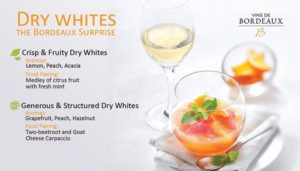
White and Red Bordeaux
Bordeaux’s white wine production, made from Sauvignon Blanc, Semillon and Muscadelle, is small; however, the wines are delicious. Referred to as zippy and fresh, from Entre-Deux-Mers, to creamy and lemon-curd like, from Pessac-Leognan.
Bordeaux’s white wine history starts in the sub-region of Sauterne, noted for its sweet wines that were enjoyed by Thomas Jefferson. In the 1700s, the English enjoyed the claret from the region.
In the mid-1800s the red wines of Bordeaux became important because of an official decree that classified the top producers, “1855 Classification” – ranking them 1-5. The classification has not changed (except for one adjustment) although there are many more producers in the region.
The Event
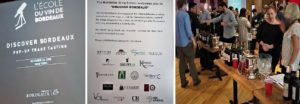
Wines of Bordeaux were recently introduced to wine buyers/sellers, journalists and educators. Hundreds of wine fans discovered (and rediscovered) the important region of Bordeaux. A few of my favorites and recommendations include:
Notes (Curated)
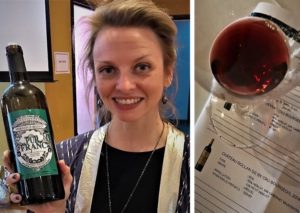
Vignoble Mingot Pur Franc. 2016. Red, 100 percent Cabernet Franc, Bordeaux Superieur (Appellation). Aged in stainless steel for 6 months.
Started by Raymond Mingot in 1964, the organic Mingot family winery is directed by Julien Mingot and covers 22 hectares of vines. The vineyards experience an oceanic climate and enjoy a terroir of limestone, gravel and sand. The Bordeaux Superieur has the AOC (Appellation d’Origine Controlee) French label and the European protected Designation of Origin (AOP) label
Notes: To the eye, dark mahogany; the nose find cherries and berries, cocoa and spice, while the palate is happy with light tannins that delivers flavor and depth to the fruity taste experience.
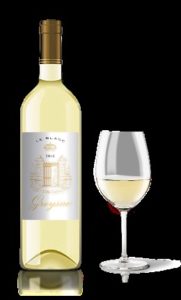
Greysac Le Blanc. 2016. White. 80 percent Sauvignon Blanc, 20 percent Sauvignon Gris. Bordeaux Blanc (Appellation).
Chateau Greysac is located in the Medoc hamlet of Begadan, north of St. Estephe and built in the 1700s. Originally owned by Baron Francois de Gunzbury, it was sold to the Agnelli family (1975), and the estate was transformed and the winemaking capabilities were updated. In 2012 the estate was bought by Jean Guyon, owner of Domaine Rollan de By, and Greysac joined its wine portfolio. Chateau Greysac Le Blanc is the special project of proprietor Jean Guyon whose goal is to produce the perfect compliment to Chateau Greysac rouge.
Notes. Light straw delights the eye and the nose finds florals, pineapple, honey, and ginger with hints of lemon zest. Be prepared for a very special taste surprise on the palate that is a mix of violets, spice, ginger, lemons and honey balanced with a light aquiline acidity. The finish brings images of sunny spring days and late summer sunsets.
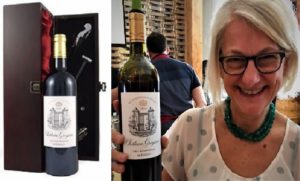
Chateau Greysac Cru Bourgeois.2014. Red. 65 percent Merlot, 29 percent Cabernet Sauvignon, 3 percent Cabernet Franc and 3 percent Petit Verdot. Medoc (Appellation).
Covering 150 acres with terroir of clay and limestone the vines average 20 years of age. Pre-fermentation maceration runs for 2 days and cuvaison extends 4-5 weeks after alcoholic fermentation in thermo-regulated stainless steel and cement tanks. Malolactic fermentation is in oak for 12 months with lees stirring for 3 months.
Notes. Ruby red to light pink attracts the eye. The nose discovers hints of cherries, plums, raisins and leathers thanks to the Merlot in the blend. The palate is happy with fresh and fruity notes while light tannins add complexity to the taste experience. Perfect for winter evenings and roast beef.
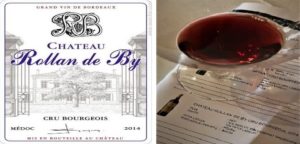
Chateau Rollan de By Cru Bourgeois. 2014. Red. 70 percent Merlot, 10 percent Cabernet Sauvignon, 10 percent Cabernet Franc and 10 percent Petit Verdot. Medoc (Appellation). Aged in a combination of 90 percent new French oak barrels and 10 percent new American oak barrels for an average of 12 months.
Jean Guyon is the owner of the Chateau Domaine Rollan de By and is a leader of the Crus Bourgeois, one of the most significant properties in the Medoc region. The vineyards occupy 128 acres with clay-chalk soils and vines that average 35 years with a density of 16,000 – 24,000 plants per acre.
Notes. Deep and dark mahogany to delight the eye and the nose is rewarded with cherries and berries plus mocha, and licorice. Soft tannins caress blackberries and plums on the palate sparking images of winter evenings and warming fireplaces.
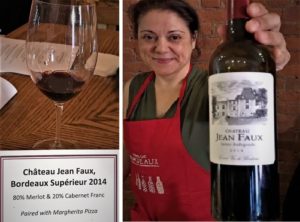
Chateau Jean Faux. 2014. 80 percent Merlot, 20 percent Cabernet Franc
Chateau Jean Faux, located near Cotes de Castillon, is an 18th century estate. In 2002 the property was acquired by Pascal Collotte, a former Saury barrel cooper. The estate includes 45 hectares of woods, orchards, rolling hills and 11.5 hectares of vineyards with 80 percent Merlot and 20 percent Cabernet Franc. The vines average 25 years of age and are planted to a density of 7400 vines per hectare and this is considered dense for the Right Bank. Since 2011 the property is 100 percent biodynamic in the vineyards.
Notes. Deep and dark ruby purple to the eye, with the aroma of dark Bing cherries, old leather, dirt, wet rocks and oak to the nose. The palate finds soft tannins and a structured delicious finish.
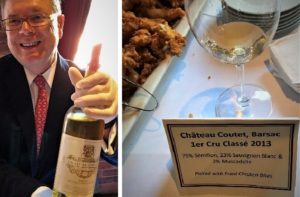
Chateau Coutet Barsac 1st Cru Classe 2013. 75 percent Semillon, 23 percent Sauvignon Blanc, 2 percent Muscadelle. Barsac (Appellation)
Barsac is approximately 40 miles south of Bordeaux in the south-west of France. The sweet white wines of the region are produced from the village’s vineyards and considered among the finest in the world. The typical Barsac wines have an intense golden color when young that becomes a deep amber over years and decades. Look for blossom-like aromas and notes of stone fruit with hints of honeysuckle, the trademark of botrytized wines. The best wines deliver a balance of sweetness with acidity.
In the 13th century Chateau Coutet was built as a fortress and the current chateau continues to show its medieval construction. In the 14th century a fortified house (La Salace) was built within the property and in the 18th century, two towers and a chapel were erected. In the 17th century Chateau Coutet was developed as a vineyard (Seigneur de Coutet) making it one of the first vineyards of the Sauternes appellation. In the 18th century Thomas Jefferson (3rd President of the USA) celebrated the Chateau as “the best Sauternes of Barsac.”
In 2014 Chateau Coutet was ranked third in the Top 100 list of world wines (Wine Spectator magazine).
Notes. Bright and sunny with yellow highlights delight the eye. The nose finds honey and clover, yellow flowers and honeysuckle, pears, apricots and hints of pecans. The palate is made very happy with sweet spices that embrace the honey and dried flowers. Long and memorable finish.
For additional information on the wines of Bordeaux, visit Bordeaux.com.
© Dr. Elinor Garely. This copyright article, including photos, may not be reproduced without written permission from the author.
